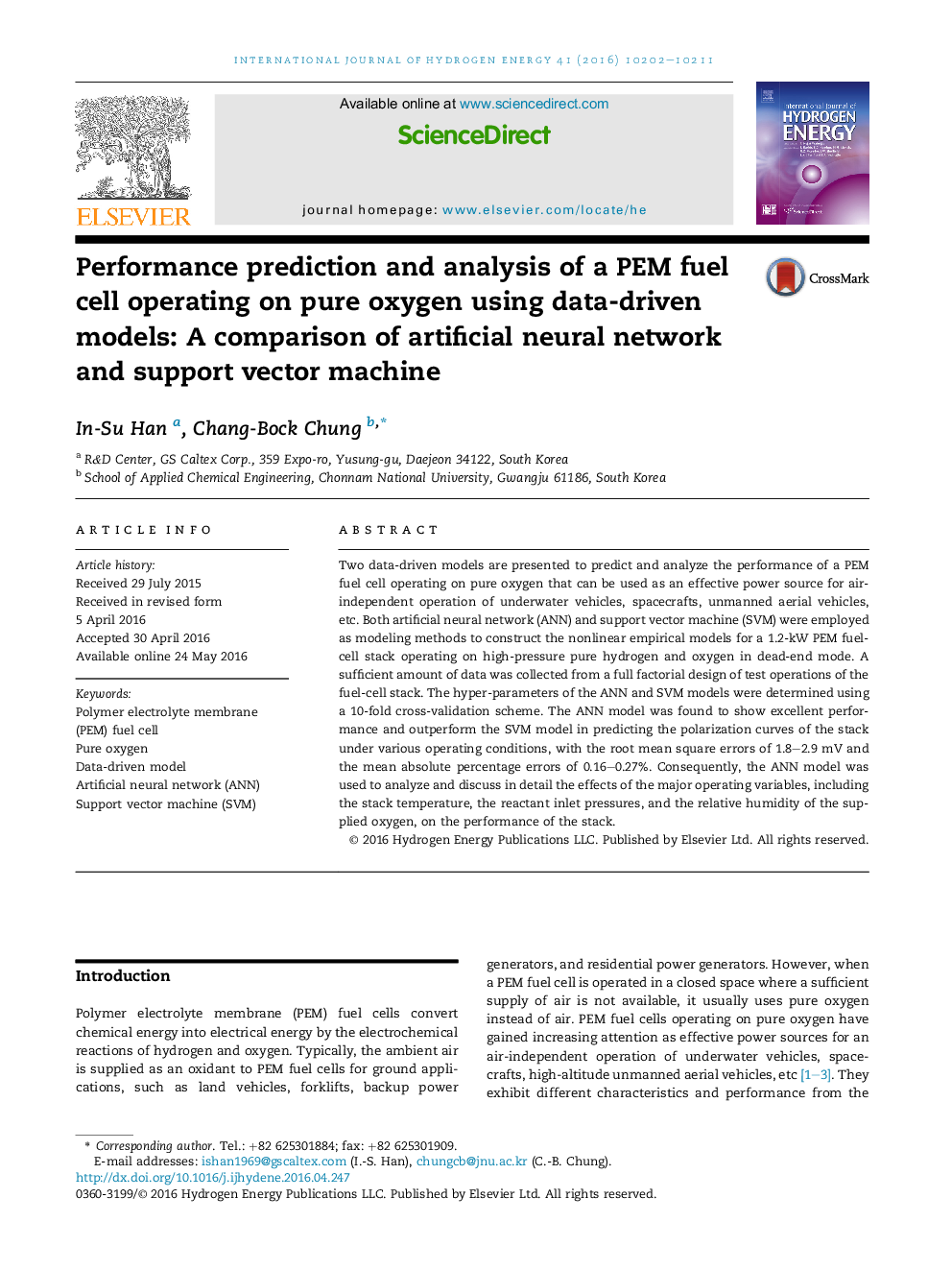| Article ID | Journal | Published Year | Pages | File Type |
|---|---|---|---|---|
| 1269752 | International Journal of Hydrogen Energy | 2016 | 10 Pages |
•Data-driven models for a PEM fuel cell operating on pure oxygen.•Experimental data for modeling were collected from a full factorial experiment.•Polarization curves predicted by ANN and SVM models were compared.•The ANN model showed excellent performance, outperforming the SVM model.•The ANN model was used to analyze the performance of the fuel cell.
Two data-driven models are presented to predict and analyze the performance of a PEM fuel cell operating on pure oxygen that can be used as an effective power source for air-independent operation of underwater vehicles, spacecrafts, unmanned aerial vehicles, etc. Both artificial neural network (ANN) and support vector machine (SVM) were employed as modeling methods to construct the nonlinear empirical models for a 1.2-kW PEM fuel-cell stack operating on high-pressure pure hydrogen and oxygen in dead-end mode. A sufficient amount of data was collected from a full factorial design of test operations of the fuel-cell stack. The hyper-parameters of the ANN and SVM models were determined using a 10-fold cross-validation scheme. The ANN model was found to show excellent performance and outperform the SVM model in predicting the polarization curves of the stack under various operating conditions, with the root mean square errors of 1.8–2.9 mV and the mean absolute percentage errors of 0.16–0.27%. Consequently, the ANN model was used to analyze and discuss in detail the effects of the major operating variables, including the stack temperature, the reactant inlet pressures, and the relative humidity of the supplied oxygen, on the performance of the stack.
